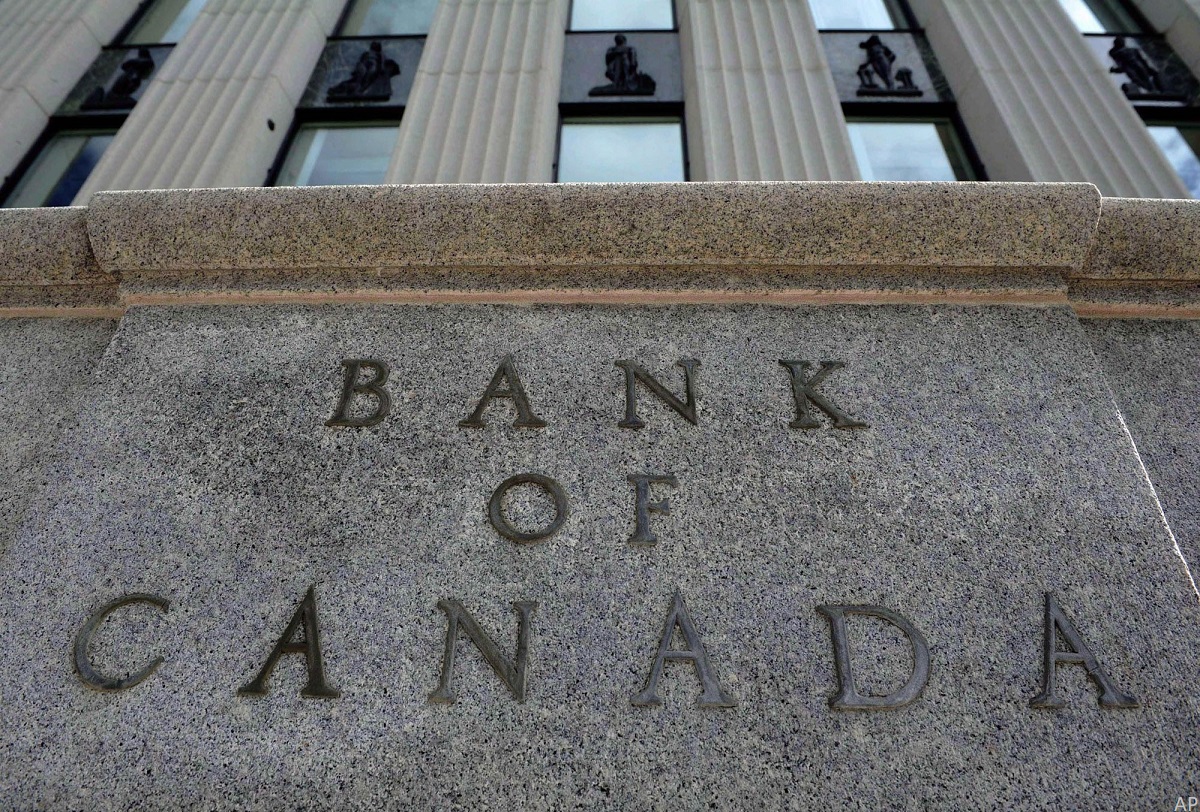
Today, in its March 6 interest rate decision, the Bank of Canada announced that it is maintaining its target for the overnight rate of 5%, with the Bank Rate at 5.25% and the deposit rate at 5%. The Bank is continuing with its policy of quantitative tightening. This is the fifth consecutive pause.
“In Canada, the economy grew in the fourth quarter by more than expected,” said the Bank in its announcement today, adding that the pace, however, remained weak and below potential.
The continued hold on Canadian interest rates was widely expected, as signs of strong pricing from services to housing continued to persist. But in today’s announcement, there are signs the Canadian economy is slowing in key areas driving inflation. “Employment continues to grow more slowly than the population, and there are now some signs that wage pressures may be easing,” said the Bank. As a result, “Consumption was up a modest 1%, and final domestic demand contracted with a large decline in business investment.”
Canadian Economy’s in Excess Supply – But Not So Fast on Rate Cuts
“Overall, the data point to an economy in modest excess supply,” concluded the bank, while cautioning that inflation risks persist. Consistent with the Bank’s warning about the limitations of monetary policy, many drivers of inflation are difficult to control. Housing remains a largely supply-driven phenomenon, while in today’s release, the bank also pointed out the impact of international forces, noting that a strong increase in exports boosted growth in the Canadian economy.
Inflation Cooling Across North America
The mixed-inflation situation has also been seen in the U.S. lately. “The falling rate of inflation over the past year has defied the predictions of those in the stagflation camp who thought that a deep economic slump would be needed to eradicate entrenched inflation,” says Morningstar’s senior U.S. economist Preston Caldwell, “Instead, the inflation-GDP trade-off has been very kind.”
The economy proved more resilient to the impact of higher rates than expected in 2023, says Caldwell, “Widespread fears of a recession did not play out. Housing activity fell sharply, but much of the rest of the economy has been unscathed.” Now to keep economies unscathed, investors anticipate policymakers will take the pressure off in the coming months.
What Does the Bank of Canada Need to See Before Cutting Rates?
As central bankers eye an interest rate cut, the Bank of Canada today provided a list of changes it wants to see in the Canadian economy. “Governing Council wants to see further and sustained easing in core inflation and continues to focus on the balance between demand and supply in the economy, inflation expectations, wage growth, and corporate pricing behaviour,” said the Bank, concluding that it “remains resolute in its commitment to restoring price stability for Canadians.” The hawkish note is in line with U.S. Fed Chair Jerome Powell’s comments on Wednesday that it is not ready to cut rates just yet. Meanwhile, Morningstar still sees rate cuts around the corner.
Will the U.S. Cut Rates Before Canada?
“We expect the first federal-funds rate cut to come in May or June 2024, bringing the rate down to 4.00% to 4.25% at the end of 2024,” estimates Morningstar’s senior U.S. economist, Preston Caldwell. “Falling inflation will make this pivot possible in early 2024,” says Caldwell, noting that slowing gross domestic product growth (and a slight rise in unemployment) in 2024 will add a further reason for a cut.
“Markets have shifted closer to our views in recent months, owing to good inflation news,” says Caldwell, noting that the market now agrees with five rate cuts through the end of 2024. “Looking beyond 2024, there’s still some divergence between our views and the market,” he says, noting a Morningstar forecast of key rates around 2% by 2026. “By mid-2026, we expect a fed-funds rate more than 150 basis points below the market’s projection.”
“We expect inflation to come down quicker than consensus does, which is why we expect the Fed to eventually cut interest rates more aggressively than it currently projects,” says Caldwell, “Likewise, other investors now appear too pessimistic about how quickly inflation will fall.”
Canadian Economist Expects Canada to Cut Before the U.S.
Michael Gregory, the Deputy Chief Economist & Managing Director at BMO Capital Markets Economics told the Morningstar Executive Forum today that he expects that for the next few months both central banks will hold. “In my opinion, the Bank of Canada is closer to a rate cut than the U.S. Federal Reserve. Growth is lackluster in Canada but is strong in the U.S. Another thing to keep in mind is that November 2024 is the election in the U.S. Will the Fed want the new government to enter with a rate change? That is a question to consider,” he said, adding that he expects rate cuts in Canada starting mid-year.
What Should Canadian Investors Do?
Should you adjust your portfolio for the latest interest rate outlook? "Investors are reminded that short-term fluctuations (if any) in interest rates may cause some market volatility, but they should not deter you from your long-term investment strategy,” Morningstar Canada's director of investment research, Ian Tam says, “This said, global equities have had quite the run-up lately which might cause your portfolio to shift away from its target mix between stocks and bonds (or in other words the asset allocation). Now is as good a time as any to have a quick look to see if you are still on course, and re-balance if necessary."






:quality(80)/cloudfront-us-east-1.images.arcpublishing.com/morningstar/A6OOX7PBSVEJ5BXDFSPKGLO72M.png)

.jpg)
:quality(80)/cloudfront-us-east-1.images.arcpublishing.com/morningstar/MCOHMFJ2MVEVPAJNB73ASRA4EA.jpg)









